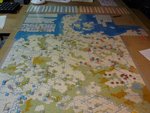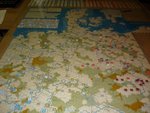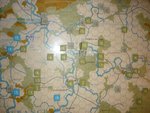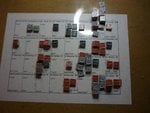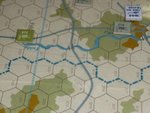parsifal
Colonel
I am curently about to play a simulation literally called "The Next War", designed by James Dunnigan (now DOD military consultant working for the pentagon).
Its a biggish game, about 2000 counters, and looks at the possibilities for a hypothetical war set in the early to mid 70's. As it turns out, I think Dunnigan over-estimated the Soviet capabilities especially in the air, but it still poses some very interesting questions.
My chief question is probably at what time would the Soviet chances for victory have been at their greatest. Victory in game terms means the defeat of the NATO forces on the German front in central europe. I think they stood to achieve the best possibility around the time of the 1973 Yom Kippur war.....US still buried in the Vietnam quagmire, huge distraction in the ME, Britain facing major unreast in Ulster. I still think the Soviets would not have won, but for us old guys, it was what we trained for, but it never eventuated.
Happy to discuss any aspect of the situation as the game designers depict it, and if people want, can report on the outcome of my war
Anyway, here are some phots of the situation immediately prior to the outbreak of "hostilities"
Its a biggish game, about 2000 counters, and looks at the possibilities for a hypothetical war set in the early to mid 70's. As it turns out, I think Dunnigan over-estimated the Soviet capabilities especially in the air, but it still poses some very interesting questions.
My chief question is probably at what time would the Soviet chances for victory have been at their greatest. Victory in game terms means the defeat of the NATO forces on the German front in central europe. I think they stood to achieve the best possibility around the time of the 1973 Yom Kippur war.....US still buried in the Vietnam quagmire, huge distraction in the ME, Britain facing major unreast in Ulster. I still think the Soviets would not have won, but for us old guys, it was what we trained for, but it never eventuated.
Happy to discuss any aspect of the situation as the game designers depict it, and if people want, can report on the outcome of my war
Anyway, here are some phots of the situation immediately prior to the outbreak of "hostilities"

